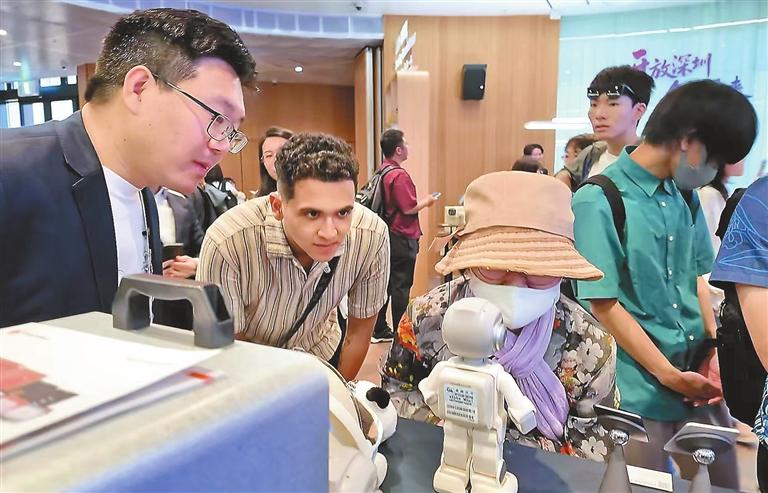
Francisco Manna TRAVELING to Osaka with EyeShenzhen for Shenzhen Week at the China Pavilion during Expo 2025 was more than just a reporting trip. It offered a rare, up-close look at how China sees itself — its history, its current trajectory, and its ambitions for the future. The China Pavilion itself is a striking structure, designed to resemble a traditional Chinese scroll. Inside, the experience unfolds in three parts, like chapters in a story. The first section dives into China’s ancient past — highlighting the philosophies and cultural traditions that continue to influence the present. It’s reflective and atmospheric, grounding the visitor in a sense of continuity. The second part shifts to the present, and this is where things get interesting. It’s not just a showcase of technology; it’s about how modern China integrates the old with the new. One example that stood out was Chengdu’s Dujiangyan irrigation system — a 2,000-year-old engineering feat that’s still in use today, now enhanced with modern technology. This isn’t about preserving heritage in a museum sense. It’s about using it, adapting it, and building on it. The final chapter looks to the future. Here, China puts forward a bold, optimistic vision — smart cities, green technologies, ecological stewardship, and international cooperation. It’s a clear message: China is not only keeping pace with global change, it intends to help shape it. Within that larger narrative, Shenzhen Week brought a burst of energy. As one of China’s most innovative and fast-moving cities, Shenzhen used its moment on the Expo stage well. The exhibition was broken into themed sessions — mornings focused tech, afternoons on transportation, evenings on leisure. The structure worked, giving a layered, nuanced view of the city as not just a tech hub, but also a plural and diverse place. What stood out most was the confidence of the presentation. Shenzhen wasn’t trying to be perfect — it was trying to be real, ambitious, and forward-looking. And that same spirit ran through the China Pavilion as a whole. It didn’t shy away from complexity. Instead, it embraced the full arc of China’s story: where it started, what it’s facing now, and where it wants to go. Expo 2025 is a global event, but the China Pavilion — and Shenzhen’s presence within it — felt personal, grounded, and remarkably self-assured. | 
